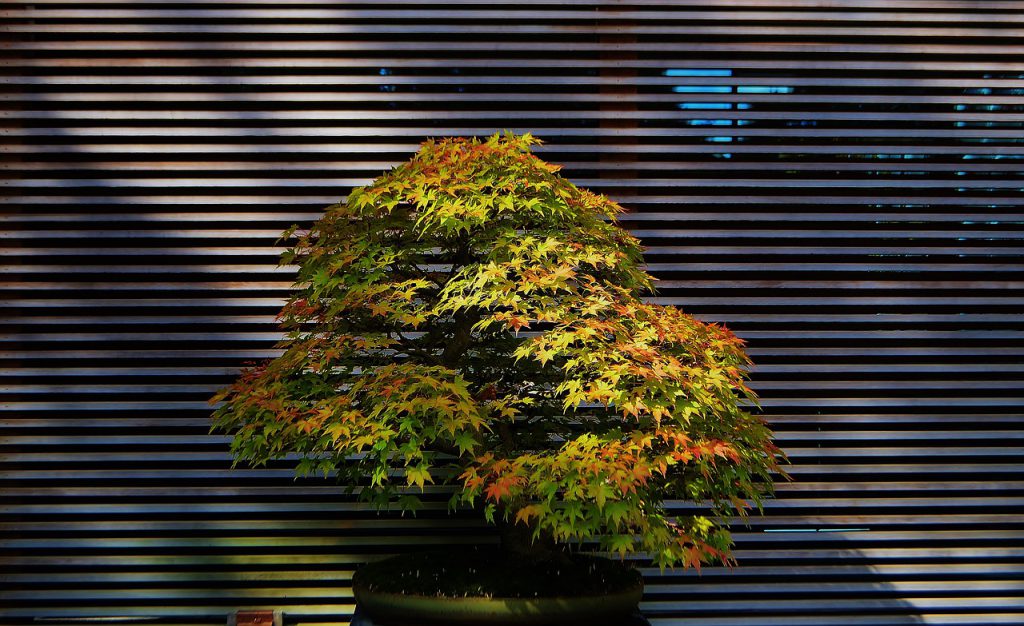Japanese Maple Bonsai Tree

The Japanese maple bonsai tree is a popular choice for bonsai enthusiasts. It is easy to care for and can be kept in a small pot. The leaves are small and delicate, and the branches are slender. The leaves also have beautiful red color in the fall. The tree can be trained into many different shapes, making it a versatile choice for bonsai enthusiasts.
Care and Maintenance
The Japanese maple bonsai tree is a beautiful addition to any garden, but it requires some special care and maintenance to keep it looking its best. Here are a few tips on how to take care of your Japanese maple bonsai:
Type of soil
The type of soil you use is essential for the health of your tree. A mixture of two parts potting soil and one part compost is a good choice. You can also add some organic matter such as leaf mold, peat moss, or bark to the mix.
Potting
When potting this bonsai tree, you will want to use a pot that is slightly larger than the root ball. The pot should have drainage holes in the bottom, and the soil should be well-draining. The potting mix you use should also be well-draining. You can either make your own mix or purchase a pre-made mix from a garden center.
Placement
The placement of your Japanese maple bonsai tree is one of the most critical aspects of its care. The tree should be placed in an area where it will get plenty of sunlight, but not too much direct sunlight. The ideal location is in front of an East- or West-facing window. If you don’t have a window with good exposure, you can also place the tree outdoors on a bright day but bring it back inside at night.
Watering
When watering your Japanese maple, always use water that is room temperature or cooler. This will help avoid shocking the tree’s roots. Be sure to water thoroughly until the water begins to drip from the drainage hole at the bottom of the pot. You will need to water your tree more often in summer than in winter, as it typically needs more water in hot weather. In general, you should aim to water your tree every other day in summer and every 3-4 days in winter.
Fertilizing
When caring for this bonsai tree, it is important to fertilize it properly. Fertilizing provides the nutrients the tree needs to grow healthy and strong. The type of fertilizer you use will depend on the age and size of your tree. A young tree will need fertilizer higher in nitrogen, while an older tree will need a fertilizer with more potassium.
You can either use a liquid or granular fertilizer. When using a liquid fertilizer, mix it with water according to the directions on the bottle and then pour it over the soil around the tree. With granular fertilizer, sprinkle it over the soil and then water it in. Be sure to follow the directions on the package, as too much or too little fertilizer can be harmful to your tree.
Temperature
The ideal climate for a Japanese Maple Bonsai Tree is one with cool winters and hot summers. In the winter, the tree should be kept in a cool place where the temperature will not go below freezing. In the summer, it can be placed in a hotter area where the temperature will reach up to 85 degrees Fahrenheit.
Pruning and wiring
Pruning the tree is an essential part of maintaining the health of the tree and shaping it into the desired form. Pruning helps remove dead or diseased branches, stimulates new growth, and keeps the tree in its desired shape. Wire can be used to help shape the branches but must be removed before winter to avoid girdling (cutting off) the branch.
Repotting
When it is time to repot your Japanese maple bonsai tree, it is best to do so in the early spring before new growth begins. Choose a pot that is only slightly larger than the current pot and make sure that the drainage holes are large enough. It is also essential to use a potting mix that is specifically for bonsai trees.
Remove the tree from its current pot and gently shake off all of the old soil. Cut any roots that are growing out of the drainage holes or that are longer than 8 inches. Repot the tree in the new pot and fill in around the roots with more of the bonsai potting mix. Tamp down gently and water well.